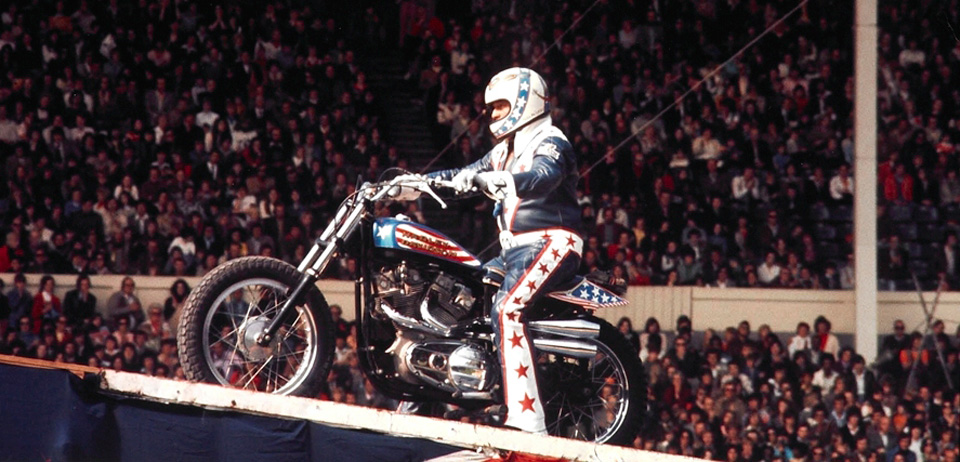36 1970s: Pop Culture and Other Stuff
1970s Pop Culture
Jim Ross-Nazzal
This is a WIP.
I need to add info on Hollywood and Vietnam, the new movie villains (Jaws, Star Wars, The Exorcist), Soul Train vs. Bandstand, and student content. To name a few.
In the 1970s I began taking drum lessons and received my first drum set (brought by “Santa”) when I was nine. I started playing tennis. I started running through the woods behind our house. I envisioned doing a type of obstacle course. And, I joined organized football and softball leagues starting in fourth grade. During the Summer, sometimes we would watch the Tonight Show with Johnny Carson. Rarely would I get the jokes? I was too young. I did like music. I had a radio and a record player and a cassette player so my friends and I recorded our own music, sometimes by holding the cassette player up to the television speakers during such shows as The Midnight Special and Don Kirshner’s Rock Concert. Thanks to Lou Ottens, a Dutch engineer, kids all over the world were able to record music because he created the cassette tape, which was popularized by Sony.
Running became a thing in the 1970s. Jim Ryun. Jim Fixx. And:
Katherine Switzer, The First Woman to Finish The Boston Marathon[1]
The oldest most prestigious marathon in the United States is the Boston Marathon, and until 1972 women were completely prohibited from competing. That didn’t stop Katherine Switzer a 20-year-old woman that decided to enter the marathon. Switzer was a journalism student at Syracuse University. There she wanted to join a cross country running team, and since there was no female team she trained unofficially with the Syracuse male cross country team. Switzer told her coach, Arnie Briggs, she wanted to run in the big 26.2 miles Boston Marathon. Briggs told her women are not allowed to enter, but if she proves herself he would take her. Switzer said she did by running a 31-mile race with her couch a week before the Boston Marathon.[2] Afterward Switzer and Briggs looked at the Boston Marathon rule book and found no specific gender restrictions.
On April 19th, 1967 Switzer accompanied by her boyfriend Tom Miller, running partner John Leonard, and coach Arnie Briggs entered the Boston Marathon. She signed up under the name “K.V. Switzer” and was given the bib number 261.[3] Switzer started the marathon with no trouble since she was wearing a hoodie because of the cold weather. On mile four a press bus with photographers, reporters, and race director Jock Semple passed beside the marathon runners. One of the reporters said to Jock, “Jock there’s a woman in your race.” Semple stopped the bus and ran towards Switzer. Switzer heard leather shoes running behind her and as she turned around Semple tried to grab her. Semple then yelled at Switzer “Get the hell out of my race, and give me those numbers” and proceeded to try to yank Switzer’s bib number off her.[4] Tom her boyfriend gave Semple a shoulder charge which helped her get away. Briggs yelled out to Switzer “Run like Hell.”, and she continued running.

Switzer said she felt embarrassed about the whole situation and almost decided to quit the race. But she said she had to finish in order to prove women are capable of finishing long-distance races.[5] So she did, Switzer finished the race in 4 hours and 20 minutes, being the first woman to ever complete a race at a Boston Marathon. Switzer said she won’t be the last so she campaigned to allow women to compete in long-distance marathons. In 1972 five years after Switzer ran, women were officially allowed to compete in the Boston Marathon. Afterward, Switzer became an activist for female runners. She campaigned to include the woman’s marathon in the Olympic Games which were held for the first time in the 1984 summer Olympic Games.[6] As the first woman to officially enter the Boston Marathon, Katherine Switzer is considered to have broken the gender barrier and paved the way for women in running.[7]
There were other sporting events in the 1970s. One thing they had in common was the Houston Astrodome. The Astrodome, opened in 1965, was “the world’s first indoor, air-conditioned domed stadium”[8] The Astrodome effectively shut down in 2006.
In 1971 (Jan 7-8), the Astrodome hosted Evel Knievel. Evil Knievel was a daredevil stunt rider on a Harley Davidson painted red, white, and blue. He jumped things. He tried to jump the Snake River Canyon in Idaho (1974). He was not successful. He was successful at jumping busses and the Caesar’s Palace fountains in Las Vegas. But in 1971, in Houston Texas, Evel Knievel set a world record by successfully jumping over 13 cars. The distance of the jump was a record, but so too was the number of tickets sold: 100,000. He set another distance record shortly thereafter in California. A record that lasted 27 years.

Knievel charged $60,000 for the jump and tickets sold for $3-$4. He was in town also to promote the Thrill Auto Show, sponsored by Pace Management, in the Astrodome.[9]
A second (and 2b) event held in the Astrodome was the fight between “The Greatest” (that would be Mohammad Ali) and Jimmy Ellis on July 26th, 1971. Although the fight lasted until the 12th round, the fight was lopsided and after all was a sparring match, not a prize fight. “Referee Edison said ‘He (Ellis) didn’t know who he was or where he was. At the end of the 11th round I told him ‘That’s it.’[10] Ali earned $450,000 plus 20% of the closed circuit tv revenues.[11]
Then, in November of 1971 Ali fought Buster Mathis in the Astrodome. This was a title fight and Ali won in a unanimous decision.

But the biggest, most lavish, most highly publicized event held in the Astrodome in the 1970s had to be a tennis match. Known as the “Battle of the Sexes,” in 1973 a two-time world champ (1946 and 1947) named Bobby Riggs (age 55) challenged the women’s champion, Billie Jean King (age 29) to a tennis match because Riggs was a misogynist and generally did not support gender equality. I remember watching this. I was 9. I had just started learning to play tennis.
“The event grew to major proportions, due largely to Bobby’s pre-match bluster and chauvinism, which further stirred up the surging feminist movement in this country at that time. Television latched onto the increasing volume and amplified it with prime-time coverage. By air-time, there was a huge TV audience, estimated to be 90 million worldwide. In addition, there were 30,000 in attendance at the Astrodome, considered to be the largest crowd ever to watch a tennis match. The atmosphere was circus-like.”[12]
There was the insane pageantry leading up to the match. King was carried in by muscular servants aboard a gold litter. Riggs was brought in seated in a Chinese rickshaw, pulled by female models. Riggs was sponsored by the candy Sugar Daddy. Billie Jean King easily beat Riggs.
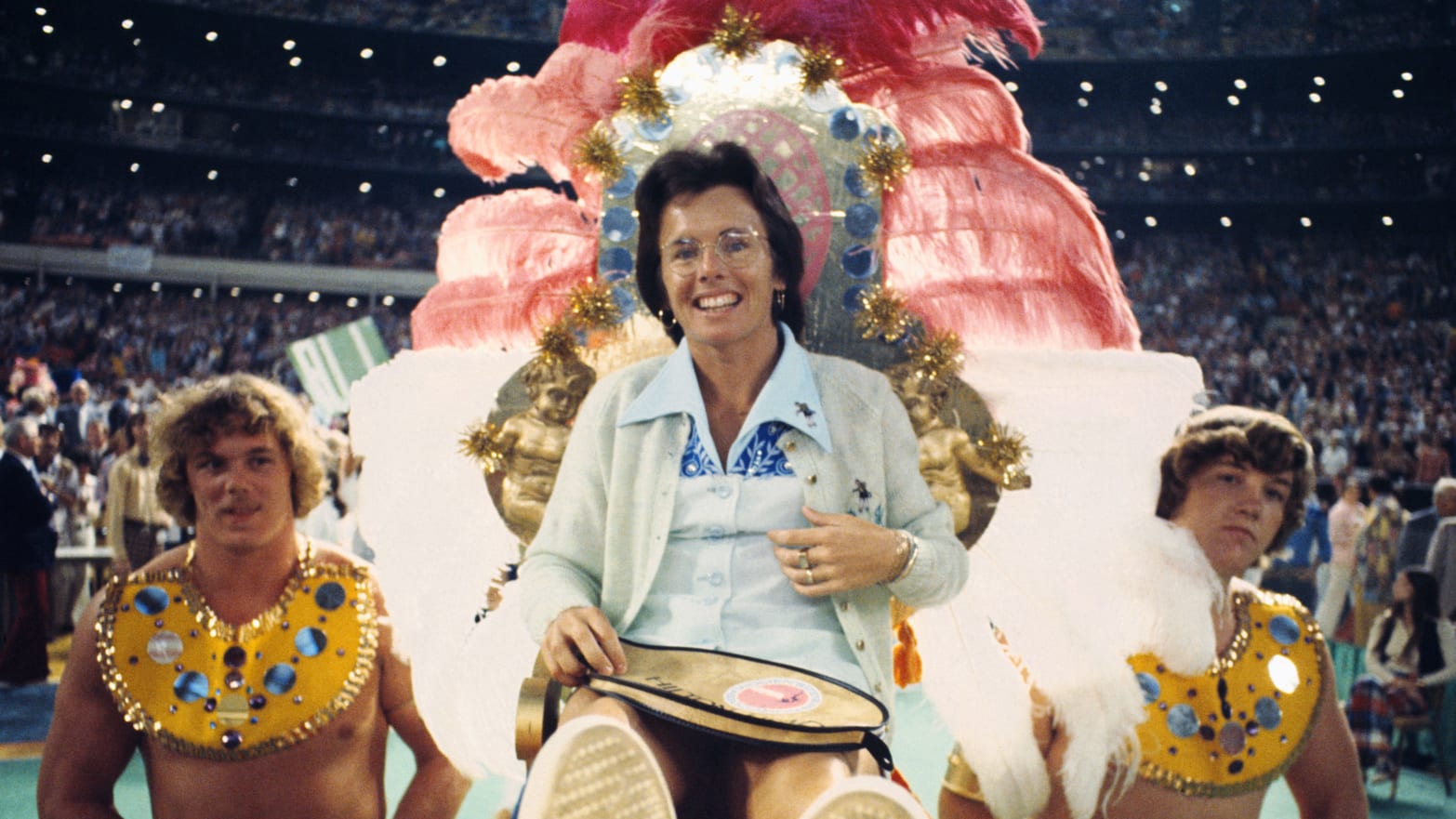
Knievel was the King of the motorcycle daredevil world. Ali was the king of the ring. And Billie Jean King proved that women were superior to men, at least on the court. And then there was The King. Elvis. Elvis Pressley played the Astrodome during two rodeos: 1970 and 1974.
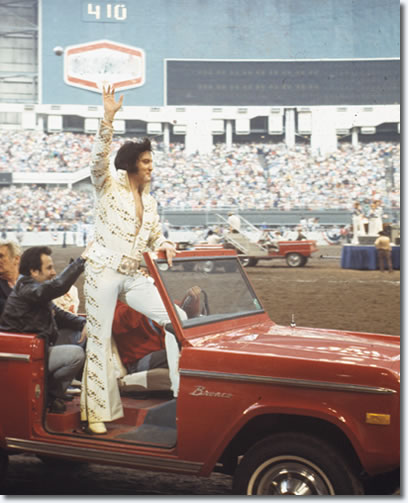
Elvis actually was in Houston for multiple concerts both years and was playing the Houston Livestock and Rodeo. At that time, the Astrodome hosted the Rodeo. Hence the comical photo above of Elvis riding around the rodeo ring on his own version of the bucking bronco. In 1970, Elvis played the Astrodome on February 27, 28 (two shows), and March 1st. This is an article in reaction to his March 28th show:[13]
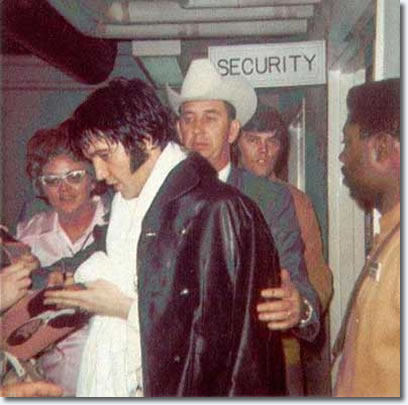
Elvis Brings down House At The Dome
By Charles Garder : Houston Post : March 1, 1970
Concert Date: February 28 1970 (7:45 pm). Houston TX.
Elvis Presley brought down the house and all the attendance records of the Houston Livestock Show and Rodeo came tumbling down on the shoulders of his white shirt Saturday night at the Astrodome.
Presley, the entertainment sensation of 15 years ago, is making his first public appearance in 10 years and he proved his audience appeal still exists, at least in Houston.
The largest crowd ever to attend a rodeo performance to Houston – 43,614 screaming fans – were present Saturday night for the rodeo and Elvis’ fourth of six performances.
He had drawn the largest matinee crowd – 34,443 Saturday and his two performance total exceeded by 3079 the two-performance total attracted by Roy Rogers and Dale Evans here two years ago.
Elvis returns for two shows at 2 and 7 pm today and tickets are still available for both performances.
The four performances in which Presley, his band, and vocal group have appeared have drawn a total of 131,064 people to the Astrodome. It is by far the greatest start that the Houston event has made since it moved to the Dome in 1966. The show’s attendance record was established in 1968 and through Saturday night of that year, a total of 117,695 people had attended five performances, one more than this year.
The attendance records are, of course, world marks for indoor rodeo events. Presley who has never been known as a talker on stage, probably expressed it perfectly Saturday night when he commented:
“You have been a fantastic audience,” he said prior to introducing his associate in the 45-minute show.
Police are stationed around the arena to keep the audience away from Elvis but Saturday afternoon, a fan sneaked in through the rodeo chutes and was within a few feet of the star when he was apprehended by police. The giant audience was also an inspiration for the cowboys.
Jimmy Dix took the first go-round lead in the bareback competition. Bernard Betz grabbed the lead in the calf roping event and Dan Willis moved to the front in the Brahma bull riding.

Elvis held a press conference on March 1st, 1970. In the following textbox is an excerpt from an Elvis Pressley online museum:[14]
After the final show there was a press conference at which Elvis was presented with gold records for 5 of his 1969 releases. At the Sunday afternoon press conference (This Press Conference has always been wrongly dated as being from February 27 1970, but no Press Conference was held on that date.) Elvis said he hadn’t seen anything of Houston outside his hotel suite and the Astrodome. Elvis went on to tell reporters ‘I got a big thrill out of this appearance, I loved it. I know I’m signed to do the International Hotel in Las Vegas again, but nothing has been said about other personal appearances. I’d like to do them’.
Later in the news conference he said ‘I knew it would be hard work at the Dome. There is no personal contact. I decided I just had to work as hard as I could, do the show and get off. The sound system bugged me the first night because I kept hearing my own echo. We had our own engineer and we got that all straightened out’.
Colonel Parker was asked about further plans for personal appearance tours, to which he replied ‘I don’t know anything’. During the conference hundreds of teenagers hung out of windows in adjoining wings of the hotel cheering Elvis. Elvis was great about the whole thing. He yelled ‘Hang on there babies, I’ll be right out’ and told the qudiences he loved them. He was a warm and friendly man and happily shook hands with a couple of hundred people at the press conference and freely answered all their questions. The purpose of the Sunday afternoon conference was to give officers of the Houston Livestock Show, RCA Records and Sherriff Buster Kern a chance to pay tribute to Elvis and the Colonel. As you know by now, Elvis broke every rodeo record. Louis Pearce, Buddy Bray and Dick Weekley, on behalf of the shows officers, presented him with a ‘King Midas’ Rolex watch valued at $2,500. The officers had presented one to Pearce when he turned over the presidential reins last year and Elvis admired it when when the group went to Las Vegas to make the deal for his coming here. Elvis laughed ‘I wasn’t hinting’. There are very few of these in the world and Elvis’ is No. 343 to be made in the entire world. Elvis and the Colonel were also presented plaques naming them life members of the show.
Sherrif Kern told Elvis ‘I know you want to get out of town Monday and this will help you’. He then gave Elvis a gold Deputy Sheriffs badge. Colonel Parker asked ‘How am I supposed to get out of town? Do you want me to hitchhike?’. So Buster presented the Colonel with one too.
Elvis was also given a stetson. Then Elvis said ‘I should be given an award for nerve’.
RCA Vice-President Rocco Loginestra was on hand to present Elvis with five gold records. They were ‘In The Ghetto’, ‘Suspicious Minds’, ‘Don’t Cry Daddy’ and two albums ‘Elvis At The International’ and ‘From Elvis In Memphis’. It is reported that this is the first time any artist has received five gold records in one year.
It was noted by many reporters that a very interesting thing was taking place. Elvis had been in the business nearly sixteen years now, and the children of his original fans were ‘Tearing down the roof’ at his performances. As teenyboppers tapped on the window outside, a newsman asks ‘How do women in their twenties and thirties react to you now?’ ‘Well, it varies’ he said with a wide grin.
When Elvis returned to Houston in 1974, he played two concerts on one day, March 3rd. Also at the Livestock and Rodeo. An anonymous part-time journalist had this to say about his first rodeo:[15]
So, my first rodeo in the Dome … the air was thick with the aroma of horseshit and spilled beer. People could smoke cigarettes anywhere then, so everywhere you turned there was some redneck with a cowboy hat, boots and a butt hanging from their lips. We were up in the press area (5th level) of the Dome and the lights went down in the giant arena – a band on a stage that seemed far, far away (the best seat in the house was at least 50 yards from the stage) kicked in to a chugging beat. Then Elvis, who was already on stage, started singing “See See Rider” and the place erupted.
I’ve been to a lot of events in the Dome and I have never heard a roar like the one that came out of that crowd. It was tough to hear the music because the Dome’s sound system was crap and women didn’t stop screaming for the entire show. I do remember one highlight was “Polk Salad Annie,” where Elvis hammed up his “Suthin” accent. For a while the place was dark and they kept a spotlight on the jumpsuited figure on stage, and from our perch he looked kind of like a Christmas tree ornament.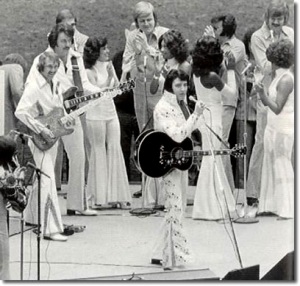
He did his live showpiece “Suspicious Minds” and even though that got the crowd whipped up again it seemed to me like he was going through the motions a bit. Understandable, because he had another show scheduled for that night. Anyway, I remember he did a Willie Nelson song (“Funny How Time Slips Away”) after which Elvis thanked everyone for coming out to see him. After the finale, they put Elvis and his posse in the back of a pickup and drove him around the perimeter of the stadium so fans could reach out and slap hands with the King. That procedure must have taken about five minutes – all the while the band kept pumping out that Memphis riff they opened the show with.
Then the truck pulled in to a tunnel and Elvis was gone. This voice came on the PA and said, “Ladies and gentlemen … Elvis has left the building.” That’s what he really said, but I think for legend’s sake I’ll swear the announcer said “Elvis has left the Astrodome.” After all: When the truth becomes legend, print the legend.
Live shows were almost the only way to experience musical acts in the 1970s. There was tape, of course, but there were not many shows that used tape from concerts or what might be called videos. Or, even worse, “live” bands that lip-synched to their music. Terrible! Two of those which mixed live and taped music were Don Kirshner’s Rock Concert (1973-1981) and The Midnight Special (1973-1981), both pre-dated Saturday Night Live (1975-Present).
Once upon a time, late-night television did not exist. Well, maybe after the 10 pm (Central) or 11 pm (East and West coasts) news there might be a movie, but not many “late night” television options. One exception was The Tonight Show with Johnny Carson. These days (2021) The Tonight Show is hosted by Jimmy Fallon. Johnny Carson hosted the Tonight Show for thirty years, from 1962 to 1992. New comedians cut their teeth on his show. But mainly Carson hosted a talk show. The music was provided by Carson’s house band, led by Doc Severinsen. Dick Cavett and Merv Griffin were the other two powerhouses. But Cavett’s show was intellectually ethereal and Griffin was poor-man’s Carson. Griffin was a multimillionaire (he produced some of the most popular game shows of the 70s and 80s) so what I mean is that Griffin’s show tended to book more of B-list celebrities.

Anyhow, these and other shows were directed towards your parents (and grandparents). There really was nothing for college-age (and younger) people. At least not until Don Kirshner and Burt Sugarman came along. Don Kirshner was in the television and music business for some time. He was a producer for a show called In Concert in the early 70s but he left to start his own show in 1973 called Don Kirshner’s Rock Concert. His show signed acts that spanned a myriad of tastes from Chuck Berry to soft-rock Kansas to glam-rock Kiss to the power trio Rush to the punk band the Ramones and the classic 70s sound of Blood Sweat and Tears. By the way, my first concert was at the Wisconsin State Fair and it was Blood, Sweat, and Tears opening for Chicago. Nice. Anyhow, Kirshner’s first show included the Rolling Stones (tapped).
At the same time, Burt Sugarman (a movie and television producer) launched The Midnight Special, which ran on NBC. This show followed the same model as Rock Concert: mainly live performances, the occasional up-and-coming comedian, and contemporary set design (such as reimaging the set to resemble a disco club in the mid-to-late 70s). NBC canceled The Midnight Special, in the hopes of propping up the failing Saturnight Live, in 1981. I think one fear was that both shows shared the same viewing population and as both shows aired at the same time, NBC threw its weight behind SNL and so cut The Midnight Special hoping to gain that show’s viewing audience for SNL. That’s what I think.
:format(jpeg):mode_rgb():quality(90)/discogs-images/R-2275811-1273870421.jpeg.jpg)
Speaking of Saturday Night Live, there was this Canadian named Lorne Michaels who was the powerhouse behind a new sketch comedy show called NBC’s Saturday Night (Saturday Night Live was the name of a sports show on another network but when the show folded, NBC bought the rights to the name and rebranded NBC’s Saturday Night to Saturday Night Live).
The target audience was the coveted 18-34-year-olds. The group who watched Don Kirshner and the Midnight Special. George Carlin was the first guest host. There was some trepidation that he might launch into one of his more raunchy bits. He had been arrested for what was considered lewd behavior (his court case would eventually make its way to the US Supreme Court, where he will win, establishing a precedent on free speech). But Carlin played it safe and a piece on the differences between baseball and football. October 11th, 1975:
The first African American guest host was Richard Pryor (12/13/1975). He brought his writer with him, Paul Mooney. But Lorne Michaels said he had his own writers. Pryor wouldn’t work without Mooney so Michaels said he had to interview Mooney, just as he interviewed all the other writers he hired. Mooney was so insulted by the interview that he wrote a sketch about his experience. Called the “Racist Interview” sketch, Chevy Chase interviewed Richard Pryor for a janitorial position. They played a word association game. As the game went on the words Chase presented to Pryor got more racist and Pryor responded appropriately until Chase went one racist epitaph too far and Pryor’s character puts an end to the interview.
Mooney wrote about his experience at Saturday Night Live. Mooney wrote “After all … I’ve been put through to get here, the … cross-examination Lorne subjects me to, I decide to do a job interview of my own.”[17] “Chevy’s the boss, interviewing Richard for a janitor’s job. The White personnel interviewer suggests they do some word association, so he can test if the Black man’s fit to employ.” Easiest sketch I ever write,” Mooney continued. “All I do is bring out what is going on beneath the surface of that interview with Lorne and the NBC execs.”[18] According to the Washington Post, “The sketch epitomized the incisive racial humor at the center of Mooney’s work, from his collaborations with Pryor to his creative influence on “In Living Color” (Mooney famously helped create Homey D. Clown) to his irreverent appearances on Dave Chappelle’s Comedy Central show. It remains one of SNL’s edgiest efforts to date. “It’s like an H-bomb that Richard and I toss into America’s consciousness. All that [stuff] going on behind closed doors is now out in the open,” Mooney recalled in his memoir. “The N-word as a weapon, turned back against those who use it, has been born on national TV.”[19]
There were very few movies about the US war in Vietnam or Vietnam veterans during the 1970s. Hollywood did not look upon Vietnam and Vietnam veterans very well in the 1970s. Movies tended to paint a dark vision of them, such as Apocolypse Now, The Deer Hunter, and Coming Home.
In Apocolypse Now, an Army officer (Col. Walter Kurtz) goes wacko and tries to set himself up a little kingdom in Cambodia, from where he and his men attack the Vietcong and North Vietnamese Army forces, without orders from above. Martin Sheen’s character, Capt. Ben Willard, is sent to kill Kurtz. Along the way, Willard and his men meet up with a bunch of colorful characters and are eventually taken prisoner by Kurtz. Willard is released and given an education by Kurtz on life in general. But, because Kurtz represents the Army (and an Army gone bananas) and Willard represents the government trying to reign in the Army (spoiler alert) Willard kills Kurtz. Ta da! See. The US government ultimately is in control of the US war effort in Vietnam. Well, that’s one of the lessons of the movie. Another is about personal journey and losing one’s mind along the way. Even the “good” US military guy goes a little nuts, I guess.
In The Deer Hunter, you’d think that Vietnamese soldiers and US troops are suicidal because they seem to play an awful lot of Russian Roulette.
There are new movie villains such as a shark (Jaws) a deadbeat dad (Darth Vader) and a possessed little girl (The Exorcist).
American Bandstand vs. Soul Train: 1) Dick Clark vs. Don Cornelius; 2) Predominantly white vs. predominantly black dancers; 3) Top 40 vs. R&B (umbrellic); 4) ABC vs. Syndication on Saturday afternoon vs Saturday morning; 5) ratings?
As with the other chapters, I have no doubt that this chapter contains inaccuracies therefore, please point them out to me so that I may make this chapter better. Also, I am looking for contributors so if you are interested in adding anything at all, please contact me at james.rossnazzal@hccs.edu.
- Researched and written by Julie Arrez, Spring 2019. ↵
- Katherine Switzer, The Real Story of Katherine Switzer, 2017 ↵
- University of Lynchburg, Lynchburg Alumna Runs Boston Again, April 13th,2017 ↵
- Katherine Switzer, Marathon Women, 2007, p. 94 ↵
- "Lynchburg Alumna Runs Boston Again." Lynchburg.edu. April 13, 2017. ↵
- Kathleen Haley, Syracuse University, History-Making Athlete, March 23rd, 2018 ↵
- "Lynchburg Alumna Runs Boston Again." Lynchburg.edu. April 13, 2017. ↵
- https://savingplaces.org/places/the-astrodome#.YTZ7MZ1KjIU ↵
- https://www.pressreader.com/usa/houston-chronicle/20071201/281651070763170 ↵
- https://www.pressreader.com/usa/houston-chronicle/20170210/281509340932202 ↵
- Ibid ↵
- https://www.floridatoday.com/story/sports/2016/01/02/battle-sexes-really-second-act/78086936/ ↵
- https://www.elvispresleymusic.com.au/pictures/1970-march-1.html ↵
- https://www.elvispresleymusic.com.au/pictures/1970-march-1.html ↵
- https://30daysout.wordpress.com/2008/08/14/rock-moment-elvis-in-the-astrodome-1974/ ↵
- http://www.donkirshner.com/don-kirshner-rock-concert/ ↵
- https://www.washingtonpost.com/arts-entertainment/2021/05/20/snl-paul-mooney-richard-pryor/ ↵
- Ibid ↵
- Ibid ↵

